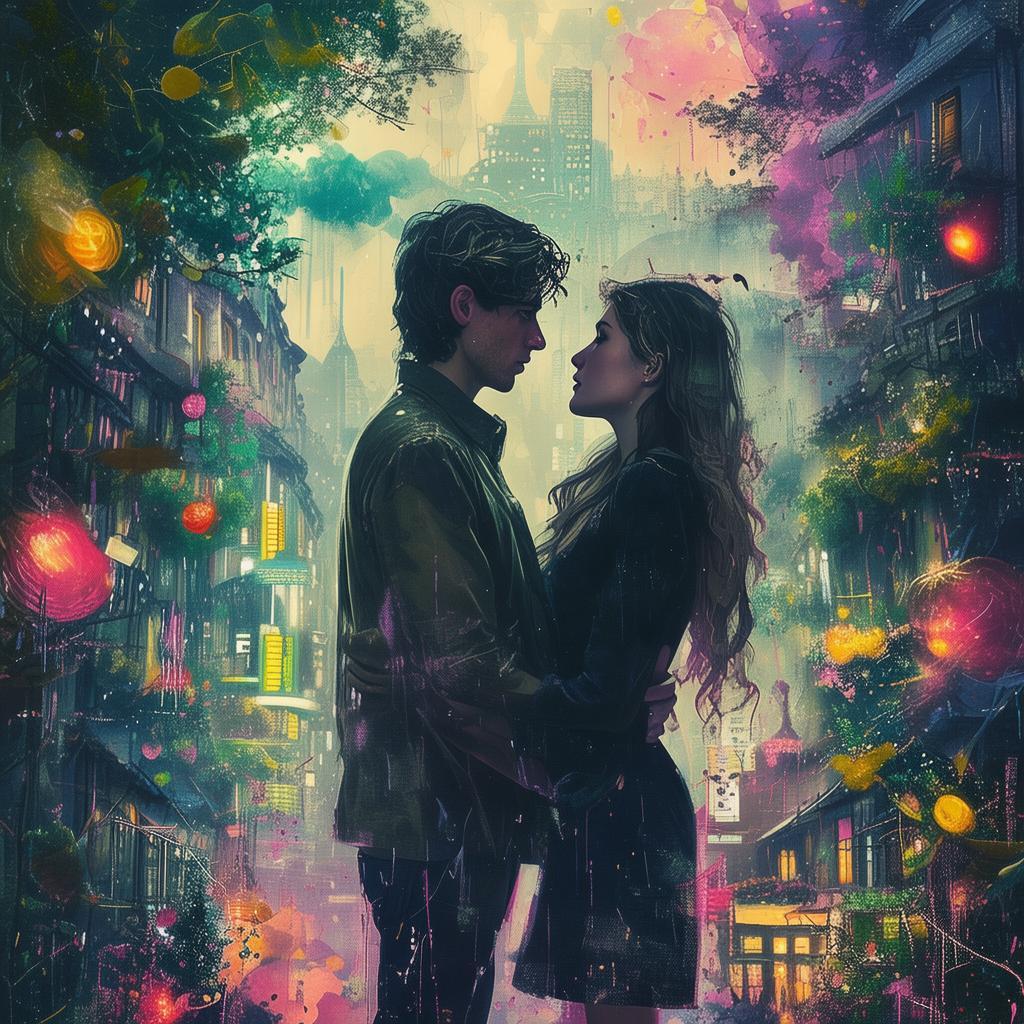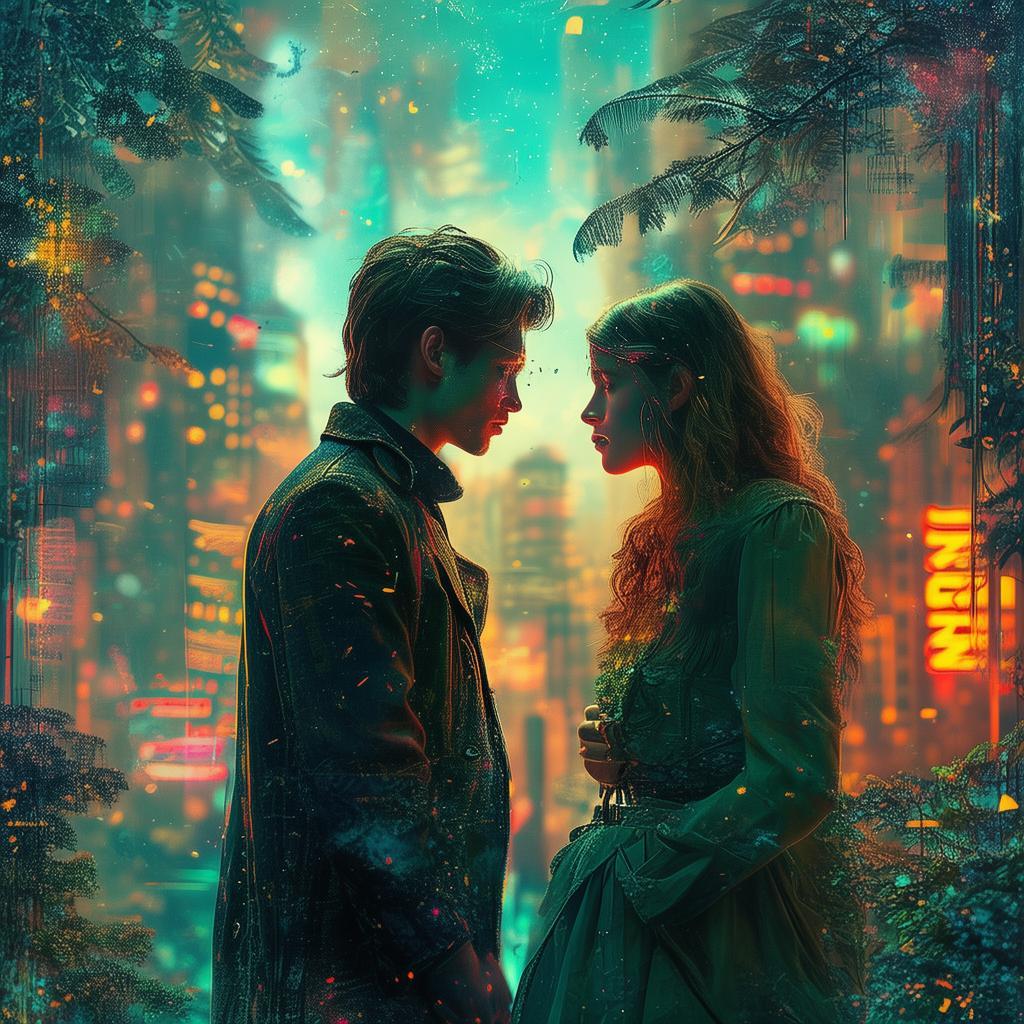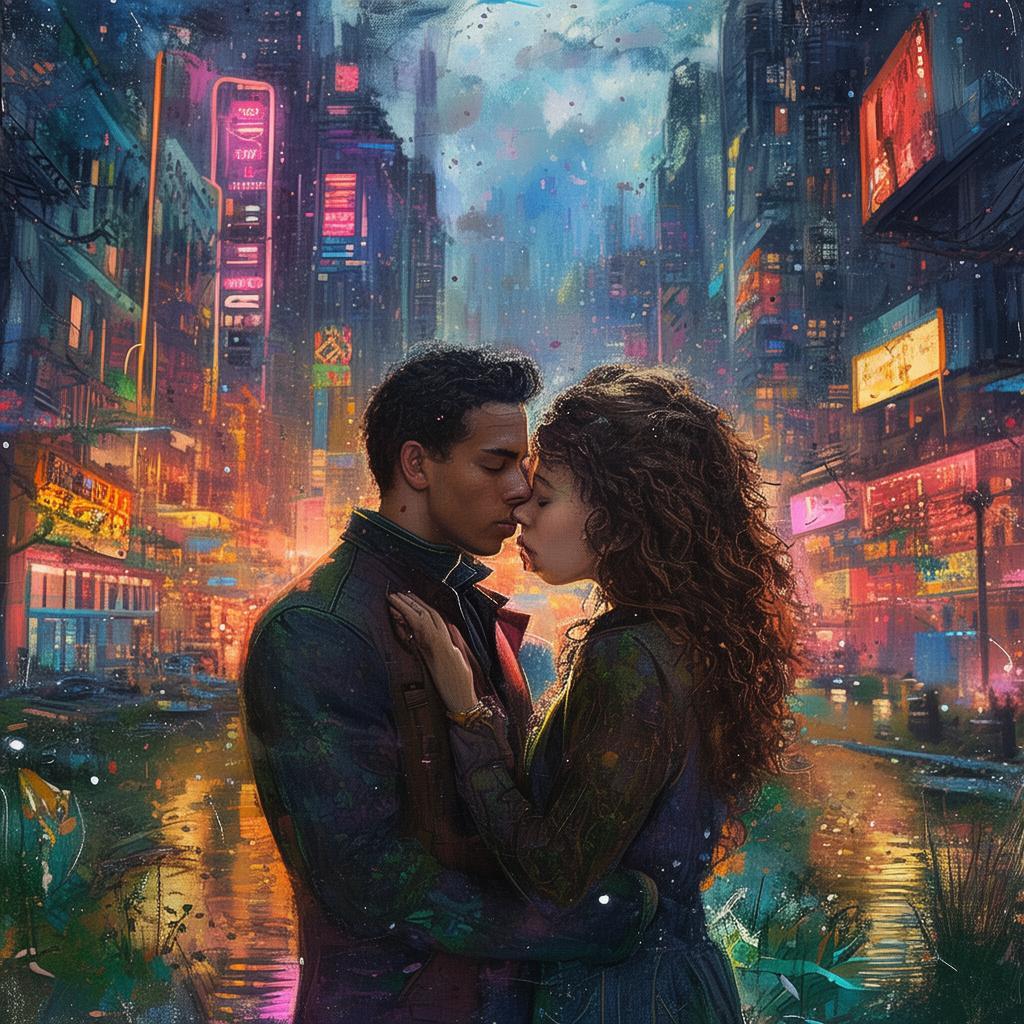Whispers of the Canvas
In the heart of Paris, where the scent of coffee mingles with the whispers of history, there stood an old, ivy-covered house. It was here that young artist Elara had found her sanctuary, a place where her soul danced on the canvas, and her passion for art flourished. Yet, beneath the layers of her paintings lay a mystery that would change the course of her life.
The story began on a crisp autumn afternoon when Elara stumbled upon a dusty, unframed painting in the attic. The canvas was a chaos of colors, a whirlwind of emotions that seemed to leap from the frame. Intrigued, she brought it to her studio, and as she cleaned the surface, the image began to take shape.
It was a portrait of a woman, her eyes filled with sorrow and longing, her hair flowing like a river of moonlight. The woman's gaze seemed to pierce through time, and Elara felt a strange connection to her. She couldn't shake the feeling that she had seen this woman before, somewhere in her past.
Elara's curiosity led her to the Louvre, where she spent hours searching for a match. It wasn't until she reached the back of a storage room that she found the painting. It was the same woman, depicted in a moment of profound love, her eyes meeting those of her beloved. The date on the back of the frame was 1923.
The discovery sent Elara on a quest to uncover the woman's story. She learned that she was a painter named Isolde, whose life was shrouded in mystery. Isolde's paintings were celebrated for their emotional depth and beauty, but she had vanished without a trace in the prime of her career.
Elara's own life intertwined with Isolde's as she began to paint the story of Isolde's love. Each stroke of the brush brought her closer to the woman, and she found herself falling in love with the story she was creating. She became Isolde, living her life through the eyes of her canvas.
One evening, as Elara worked on her latest masterpiece, she felt a presence in the room. She turned to see a man standing in the doorway, his eyes reflecting the same sorrow as Isolde's portrait. He introduced himself as Étienne, Isolde's long-lost son.
Étienne shared with Elara the story of his mother's love, a love that had spanned decades and continents. Isolde had met Étienne's father, a charming and enigmatic man, and the two had fallen deeply in love. But their love was forbidden, and they were forced to part, leaving Isolde to carry the pain of separation.
Elara and Étienne's bond grew stronger, and they began to collaborate on a project that would bring Isolde's story to life. They traveled to the places Isolde had lived, visited the places she had painted, and discovered the depth of her love for both art and life.
As they delved deeper into Isolde's past, they uncovered a hidden room in the old house, a room that had been locked for years. Inside, they found a collection of letters, photographs, and more paintings. The final piece of the puzzle revealed that Isolde had always believed her love would find its way back to her, and that the man she had loved would one day appear at her door.
Elara's heart ached with the weight of Isolde's story, and she knew that she had to share it with the world. She organized an exhibition of Isolde's works, and the public was captivated by the beauty and emotion in her paintings.

The opening night of the exhibition was a grand affair, and as the crowd gathered, Elara stood before the portrait of Isolde, her eyes brimming with tears. She told the story of Isolde's love, and the audience was silent, moved by the power of her words and the beauty of the art.
Étienne approached the stage, and the two of them shared a tender embrace. The room was filled with the echoes of Isolde's story, a story that had transcended time and art.
In the end, Elara realized that she had not only painted Isolde's story but also her own. She had found love in the most unexpected of places, and in the process, she had come to understand the true power of art to heal, to inspire, and to bring people together.
The exhibition was a success, and Elara's paintings were celebrated for their emotional depth and the connection they created between artist and viewer. She knew that Isolde's story would continue to live on through her work, a testament to the enduring power of love and art.
✨ Original Statement ✨
All articles published on this website (including but not limited to text, images, videos, and other content) are original or authorized for reposting and are protected by relevant laws. Without the explicit written permission of this website, no individual or organization may copy, modify, repost, or use the content for commercial purposes.
If you need to quote or cooperate, please contact this site for authorization. We reserve the right to pursue legal responsibility for any unauthorized use.
Hereby declared.









